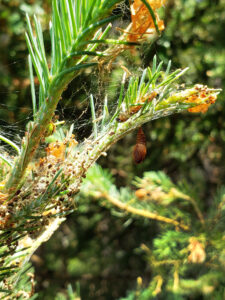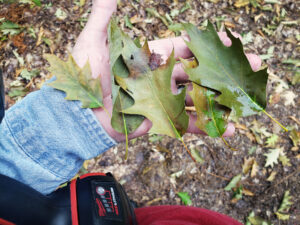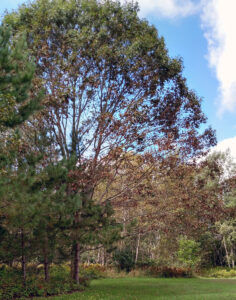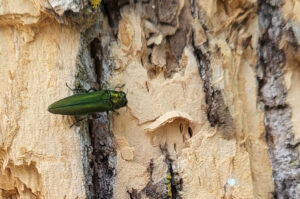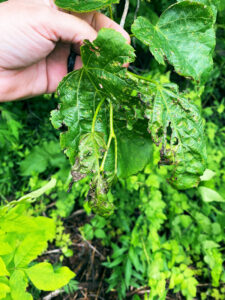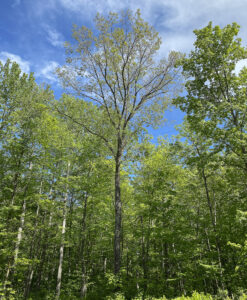By Paul Cigan, DNR Forest Health Specialist, Hayward;
Paul.Cigan@wisconsin.gov or 715-416-4920
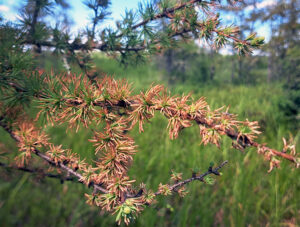
A tamarack branch shows severe needle mining from larch casebearer. / Photo Credit: Paul Cigan, Wisconsin DNR
Larch casebearer has caused localized heavy defoliation in some tamarack swamps in central Burnett County this spring, causing tamarack to stand out with a stark appearance of bright-brown foliage by mid-June.
Larvae of this exotic moth damage tamarack needles by “mining” the inner needle tissue. Heavily damaged tamarack progress in color from pale green to yellow and eventually turn a bright, reddish brown as needles dry out and die.

